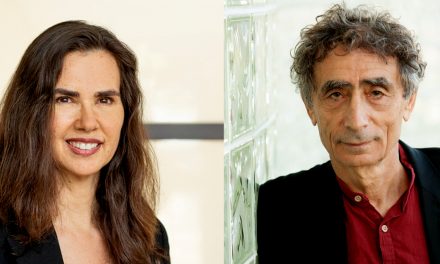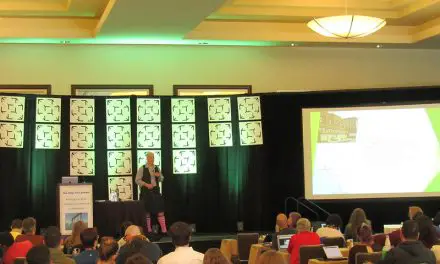Back in 2015, I had no idea that the San Diego Pain Summit would sprout into an international conference, branching to different manual therapists and other healthcare professionals in different countries. While it is still quite young, it has already attracted the attention of several of the world’s leading pain and related research, including Professor Lorimer Moseley, Dr. Robert Sapolsky, Professor Peter O’Sulllivan, and Dr. Melissa Farmer. How the founder Rajam Roose, who is a former massage therapist of more than 11 years in San Diego, California, corralled these brilliant minds together and coordinated the complexity of legalities, logistics, and lodgings without gnawing her fingers to the bone is beyond my understanding. But the Pain Summit is moving on to their fourth year!
Unlike most fitness and massage events I had attended, what is still unique about the San Diego Pain Summit is the overlapping of various disciplines in manual therapy, personal training and fitness, and psychology. Many of the presenters and educators were able to bridge basic science and clinical research with hands-on practice. You won’t find many vendors trying to sell you trinkets, “tools,” and tonics there; instead, you’ll find plenty of practitioners who are curious about pain science and applying such knowledge to their patients and practice—should you choose to be a social butterfly. But how do you bridge that gap between science and practice?
If there is a theme for this year’s Pain Summit, then it would be about how to educate patients about pain. “There are three different presentations from clinicians about how they educate their patients, which may help the audience if they hear from a range of ideas. Then, to help the audience learn about communicating with their patients, there will be a panel to help clinicians understand better what their patient’s are dealing with pain,” Roose told Massage & Fitness Magazine in an online interview.
Next Summit’s keynote speaker will be Dr. Neil O’Connell, who is the Senior Lecturer In Physiotherapy at Brunel University London in Uxbridge. “I chose Dr. O’Connell because he has a reputation for making the subject of understanding research fun and interesting,” Roose described. “Many clinicians seem to be in the need of understanding a bit better how to interpret a research paper—specially since most clinicians have a strong interest in being able to work from an evidence-based perspective. He is also teaching his two-day workshop which can further help clinicians in understanding what is really being said on a research paper.”
“It’s an honour to be invited to speak at the conference. I’ve been made aware of the conference through friends and colleagues that I really respect, and they have consistently praised the quality of the conference and the spirit of open and critical enquiry. I think in all areas of clinical practice, that’s something to embrace and encourage,” Dr. O’Connell told M&F Magazine. “The conference has attracted some fabulous speakers in past years, so to be able to come and make my small contribution feels like an opportunity not to be missed.”
Dr. O’Connell’s presentation covers the challenges that clinicians face when interpreting research in pain, primarily regarding chronic pain. “Navigating this maze of evidence is a major challenge. To do it successfully, we need an understanding of the various sources of bias and error that can occur in clinical trials, the broader biases and imperfect practices in the clinical research ecosystem, and the ways in which we personally might lead ourselves astray,” Dr. O’Connell said.
There will be a variety of workshops at the San Diego Pain Summit, including how to work with patients with pelvic pain by Dr. Sandy Hilton and Dr. Carolyn Vandyken, integrating biomechanics with the biopsychosocial model of pain by Gregory Lehman, and of course, our keynote speaker’s feature on dissecting research.
“My course will explain and cut-through the jargon of trials and systematic reviews and offer a framework for critically appraising these types of research papers,” Dr. O’Connell added. “The broad aim is to develop the skills to go beyond the abstract of a paper and be able to make detailed and informed judgments regarding the validity and results of trials and systemic reviews and to consider what those results might mean to clinical practice. I like the idea of raising the bar on the social media discussion of evidence beyond the usual flame war of throwing links to papers from PubMed (that you often may not have read) at each other! The emphasis will be on keeping it clinically relevant, fun, and interactive.
“I hope that my presentation will give a tour of those issues and offer some tips to being a better user of clinical evidence.”

There will also be a discussion panel that focuses on patients’ values and their perspectives. Joletta Belton, who is a former firefighter and had lived with chronic back and hip pain for many years, will be one of the participants.
“I’m not sure what the questions will be for the San Diego Pain Summit panel. Whatever the questions will be, I will be presenting some of my own lived experience perspective of pain,” Belton explained. “Pain is a very complex experience, both in terms of its underlying biology and consciousness. Science doesn’t entirely explain or describe the other (the lived experience). Pain doesn’t occur in our biology, in our tissues, muscles, or nerves and brain. Pain occurs in our lives and affects, and is affected by, all aspects of our lives.
That’s what I hope to convey. The science is important, but so is the lived experience, which is often overlooked.
When asked what she would like to see changed in pain management, she replied, “My wish is for the unsupported, implausible explanations to stop. For the promises of quick fixes based on simplistic, inaccurate structural ‘diagnoses’ to come to an end. I would like to see the narratives surrounding pain mechanisms and treatment mechanisms to embrace the inherent uncertainty in medicine and science. It’s possible to acknowledge there is still a lot we don’t know AND still do a lot of good for people living with pain with what we do know. Empowering people living with pain with knowledge, skills and support should be the goal of every clinician. The people living with pain deserve to be empowered to make sense of their experience and their power to change it. They deserve to be given the skills and support they need live well.”
Having attended THREE Pain Summits, will the next one quench the fires of my curiosity? How much do I need to revise and edit my brain’s library of pain? And how much do I need to toss out like stale Thanksgiving leftovers? We will see come February 6.
For more details and to register, please visit San Diego Pain Summit’s website.
Meanwhile, enjoy last year’s Q&A with Dr. Peter O’Sullivan.
Nick Ng is the editor of Massage & Fitness Magazine and the managing editor for My Neighborhood News Network.
An alumni from San Diego State University with a bachelor’s in graphic communications, Nick also completed his massage therapy training at International Professional School of Bodywork in San Diego in 2014. In 2021, he earned an associate degree in journalism at Palomar College.
When he gets a chance, he enjoys weightlifting at the gym, salsa dancing, and exploring new areas in the Puget Sound area in Washington state.





